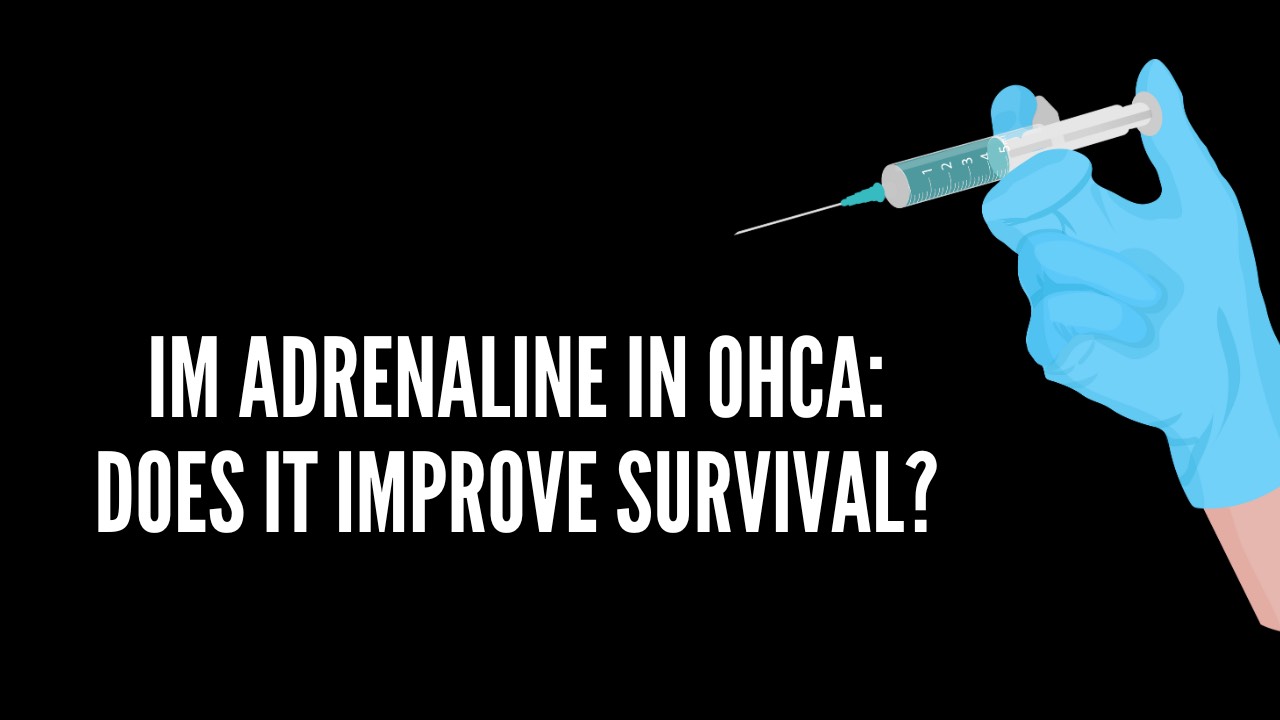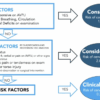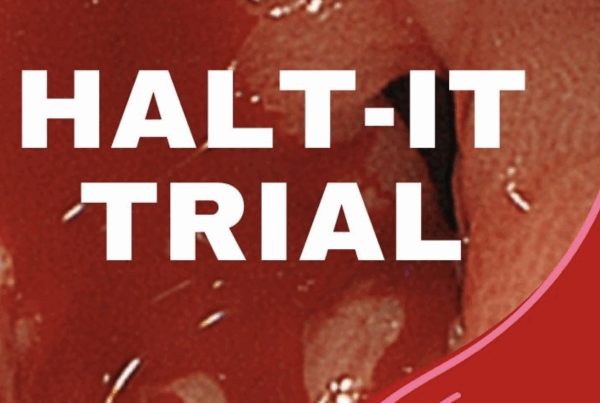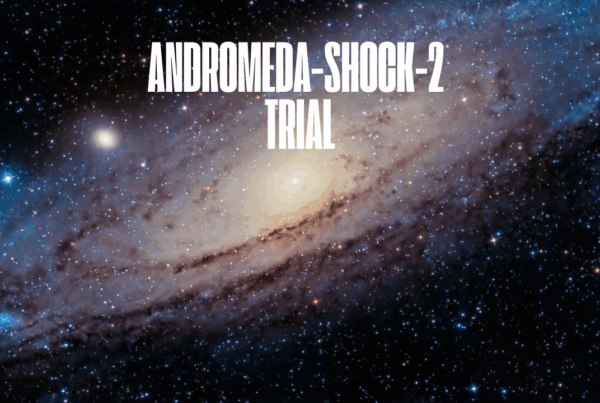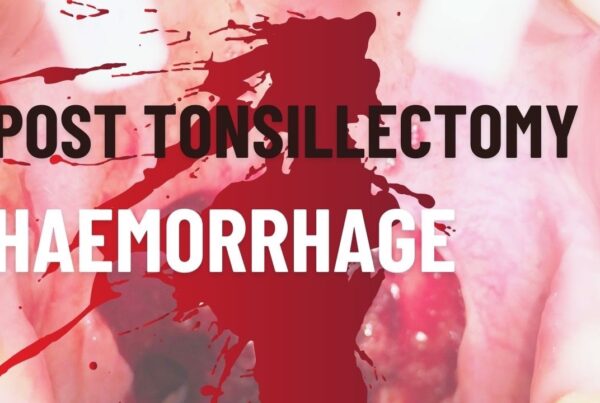Adrenaline is recommended for all cardiac arrests not due to shockable rhythms and is associated with increased survival, especially if given in the first 10 minutes post arrest
The rate limiting step, which can lead to significant time delays in adrenaline administration, is the establishment of intravenous(IV), or intraosseous(IO) access. Is intramuscular (IM) adrenaline a potential alternative? We already use it for anaphylaxis and in animal models, there is an indication that survival rates may be similar to IV adrenaline
The Study
Palatinus H,N et al. Early intramuscular adrenaline administration is associated with improved survival from out-of-hospital cardiac arrest. Resuscitation. 2024 Aug;201:110266. doi: 10.1016/j.resuscitation.2024.110266.
The aim of this study(3) “was to determine whether early IM adrenaline in adult, non-traumatic EMS-treated cardiac arrest is associated with improved survival to hospital discharge.”
……
What They Did
This is a before and after study that looked at the effect of IM adrenaline as an adjunct to current ACLS care. A before and after study measures the outcomes in a group before the intervention and then again after. This was in a single center study,in the Salt Lake City Fire Department and data was obtained from a cardiac arrest registry in that Department. Multivariable logistic regression was used to evaluate the association between IM adrenaline and OHCA outcomes……………..
Primary Outcome: survival to hospital discharge.
Secondary Outcomes included:
- time from EMS arrival to first adrenaline dose,
- survival to hospital admission
- survival with a favourable neurologic status at hospital discharge.
Below is an illustration of the selection of the study population(3):…………………………….
What They Found
Those patients receiving IM adrenaline:
- had a better survival to hospital admission (37.1% vs 31.6% OR 1.37)
- had a better survival to hospital discharge (11% vs 7% OR 1.73)
- had a better functional survival (9.8% vs 6.2% OR 1.72)
Authors’ Conclusion
“In this single-center before-and-after implementation study, an initial IM dose of adrenaline as an adjunct to standard ACLS was associated with improved survival to admission, survival to hospital discharge and functional survival.”
My Take on This
The idea of IM adrenaline is very exciting. This study looked at it in the OHCA environment. What if we could apply it to in-hospital cardiac arrest.
This was a study, with many limitations; it was a registry-based study, in a single centre, with multiple protocol violations.
We are unsure if more than one dose of IM adrenaline was given. We aren’t sure if the IM adrenaline was the cause of the outcomes. We also are not sure of what effect a 1mg equivalent dose would have……………
Read the Total Review of this study on EM Mastery

